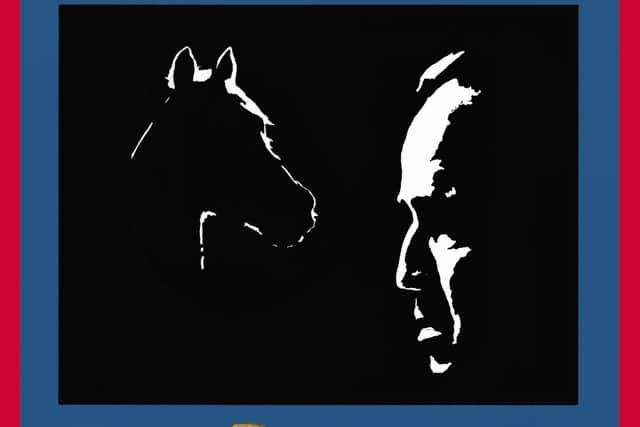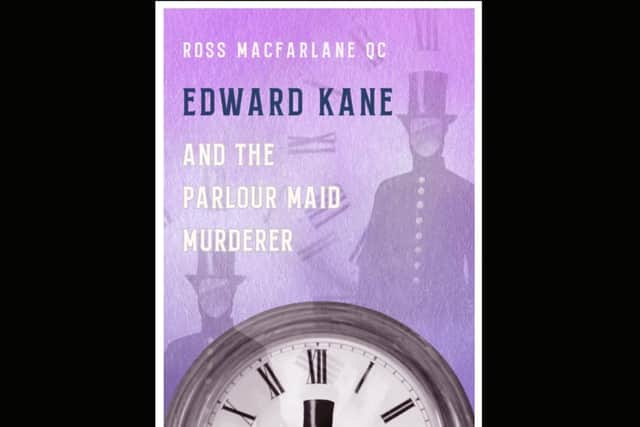The Godfather release 50-years-on: How my mum helped me sneak into the cinema in Gorbals as 13-year-old - Ross Macfarlane


Fifty years ago today, Francis Ford Coppola’s gangster epic ‘The Godfather’ was given a general release into cinemas in the USA and was hailed an instant classic.
Months later, when the film came to Scotland, it was showing around the corner from where we lived, at The Coliseum (Cinerama!) on Eglinton Street in The Gorbals of Glasgow.
Advertisement
Hide AdAdvertisement
Hide AdIt was 1972. ‘The Godfather’ was an X-Rated (i.e over 18) movie in those days, but my mum - ever-complicit when the rules didn’t suit her - got 13-year-old me dressed up in an oversized coat, woolly hat and thick scarf (‘Look what they did to my boy…’) and she ‘skipped’ me in.


I had grown up loving movies and loved watching them with my mum. She worked as a waitress all her days, but today she would also be classed a ‘film-buff’. In the 1960s, there would always be the Sunday afternoon film on tv, and we’d watch ‘Yankee Doodle Dandy’ or ‘Double Indemnity’. Mum had an encyclopaedic knowledge of film actors of the 1940s and 50s and would regularly point to the screen at the Hollywood bit-players of the day: “There’s that Farley Granger…” or “Aye, that’s William Bendix…”
But that night in 1972, when ‘The Godfather’ movie came on the Coliseum screen all of the actors (bar Brando) were unknown to her. In fact, on the first entrance of Al Pacino, my mum nudged me in the ribs and whispered: “There’s…Dustin Hoffman.”
But there was no mistaking that we were watching a great movie. The situations and quotes seemed timeless already: “Either his brains or his signature would be on the contract”; “Bada-bing!”; “Go to the mattresses”; “Luca Brasi sleeps with the fishes”.
And, of course, the gradual discovery of the severed head of a racehorse in a bed.
So, what was so special about the film that some American cinemas were showing it seven times a day? It was possibly the fact that for the first time, on screen, gangsters had been given a context where they were not just bank-robbers, bootleggers or just bad bastards. In the wake of the easy-going early 1970s, here was a familiar immigrant family working hard and doing well. There was also that recognisable - almost corporate - structure to this particular ‘family’ business, with a strong CEO in Don Corleone.
Also - counter-intuitively- the head of the family (obviously a killer) refused to allow the sale of drugs as part of the family business - because it was, essentially, unethical. This contradiction, this unexpected nobility pulled the rug from under the feet of the audience’s preconceptions of what gangsters should be like.
Or maybe the biggest surprise for the audience was that this wasn’t really a film about crime at all. It was a film about Family.
Advertisement
Hide AdAdvertisement
Hide AdBut not everyone loved ‘The Godfather’. The debate continues to this day.
In 2015, the Italic Institute of America Film Study saw: “…an entrenched, institutionalised bias in Hollywood against Americans of Italian descent…equating Italian culture with criminality.” And with the success of ‘The Godfather’ movie: “...these images gained popular acceptance on an unprecedented scale...”
But wasn’t The Mafia always ‘bad’? Years after seeing the movie, when I studied criminology, I researched the beginnings of Cosa Nostra, and found the bones of ‘protection money’ there from the start.
But the original Mafiosi (from the Sicilian word for ‘swaggering’) were young men hired to protect private land so that cattle wasn’t stolen and citrus plants weren’t poisoned. In that original form, the ‘protection’ was more of a necessary service than an intimidation racket.
Of course, no-one stays at the top forever, and after 23 weeks ‘The Godfather’ was knocked off its perch by a (now-forgotten) movie starring Goldie Hawn (‘Butterflies Are Free’, anyone?).
But the myths and stories surrounding ‘The Godfather’ endure and we’ll hear more of them in the coming months: how Marlon Brando refused to learn his script - so his lines would be pasted around the set on big cue cards – sometimes stuck on the other actors’ chests (watch closely and you’ll often see Brando looking about for his next line); how Robert De Niro wanted to play Sonny Corleone (but lost out to James Caan) - you can watch De Niro’s audition tape performance on YouTube; how the baby in the baptism scene was actually Coppola’s own baby daughter - Sofia - who grew up to be a respected film director in her own right (‘Lost in Translation’); how the word ‘Mafia’ is never actually spoken in the film - because the Mafia wouldn’t allow it; how the severed horse’s head in the bed was a real one - obtained from a dog food company.
Time passes. My mum is gone now and the Coliseum cinema burnt down in 2009, but ‘The Godfather’ is still going strong after 50 years. Let’s join in the Italian toast: “Cent’Anni!” (“May you live a hundred years!”) and raise a glass of chianti to Don Corleone and family - already half-way there.
Ross Macfarlane QC’s novel “Edward Kane and the Parlour Maid Murderer” (Scotland Street Press) is available from Amazon and on Kindle.
Comments
Want to join the conversation? Please or to comment on this article.